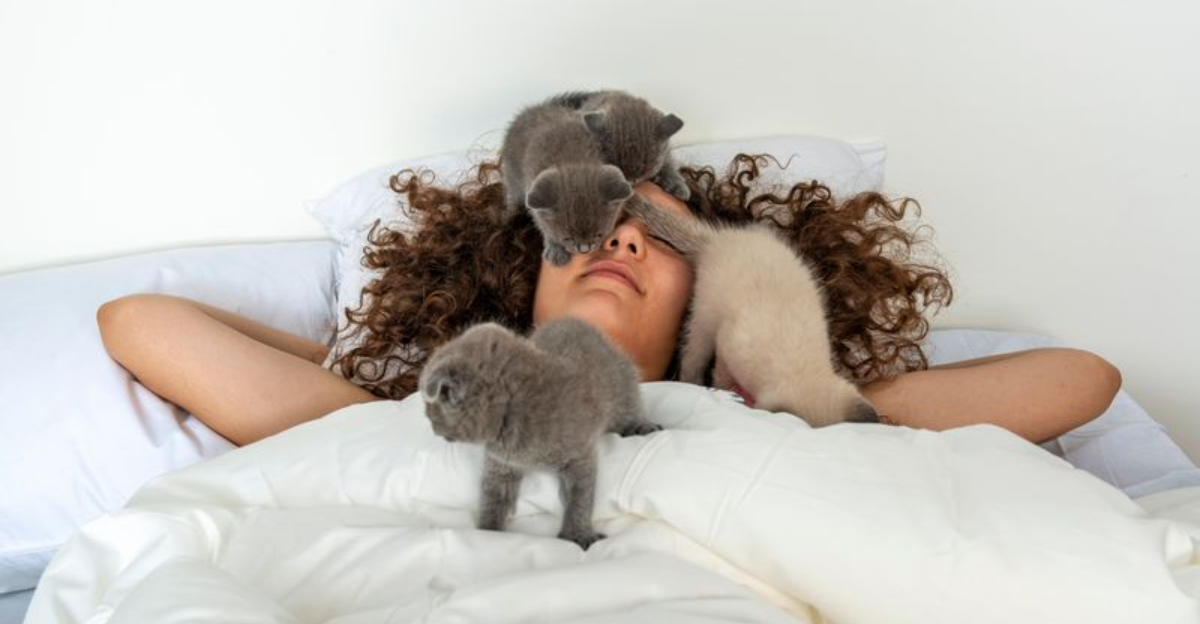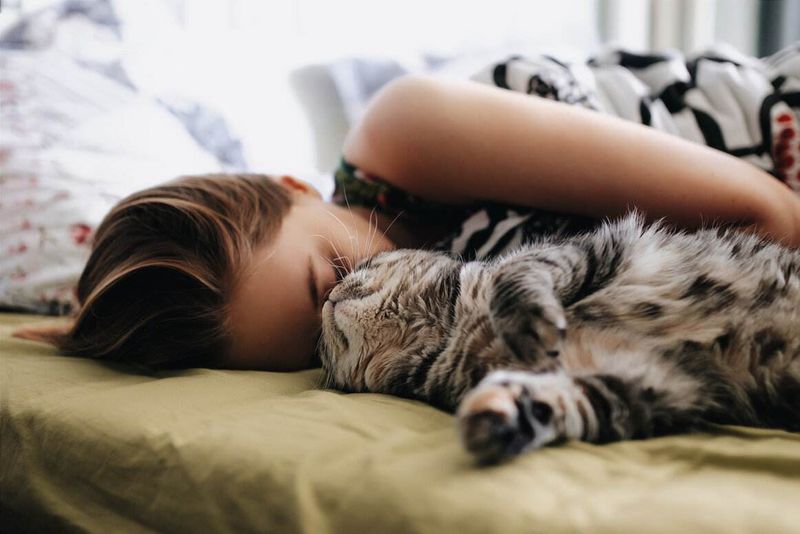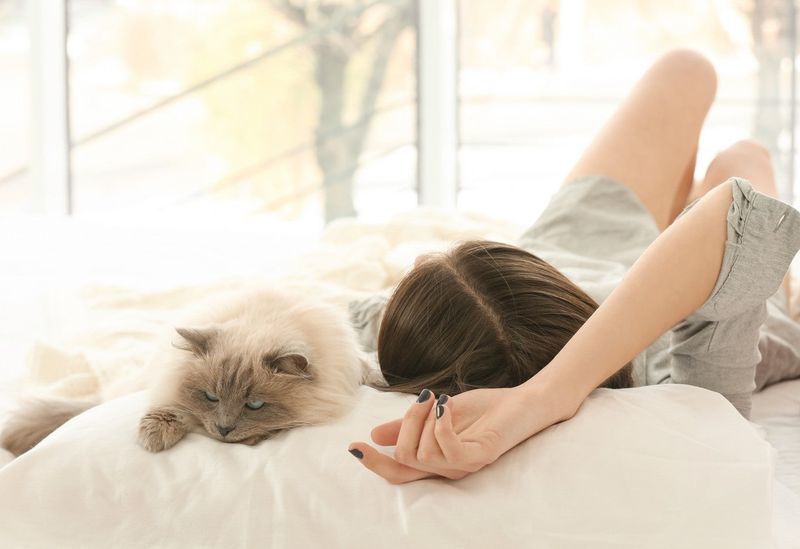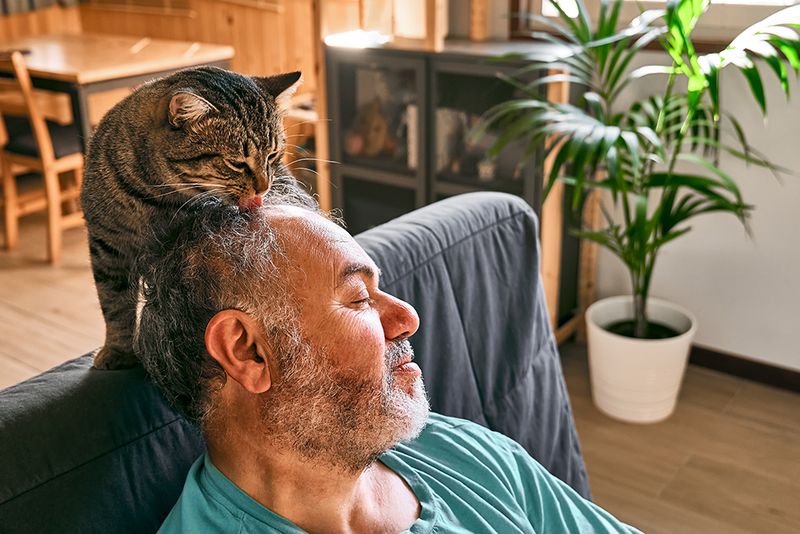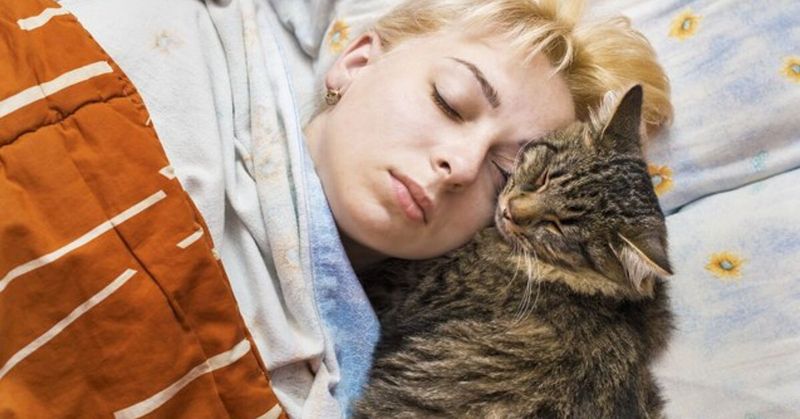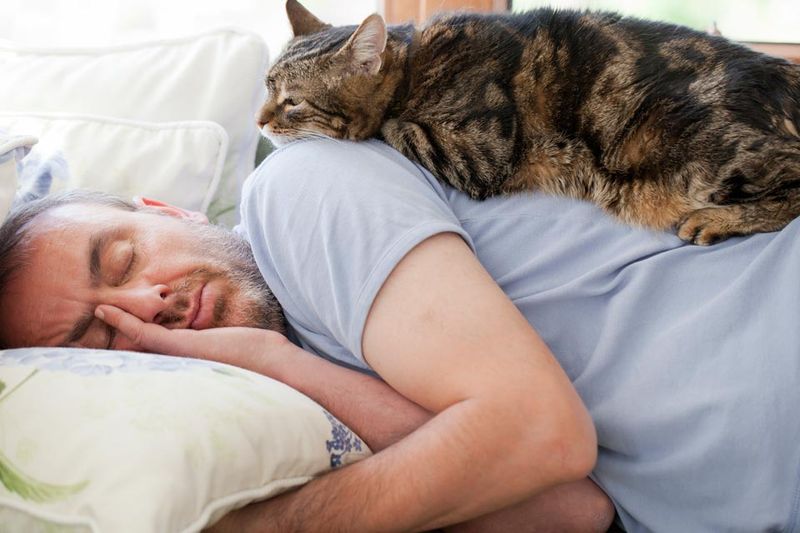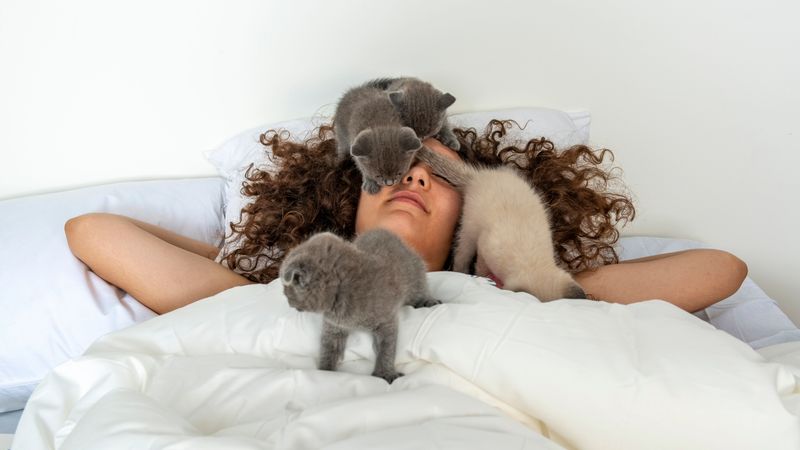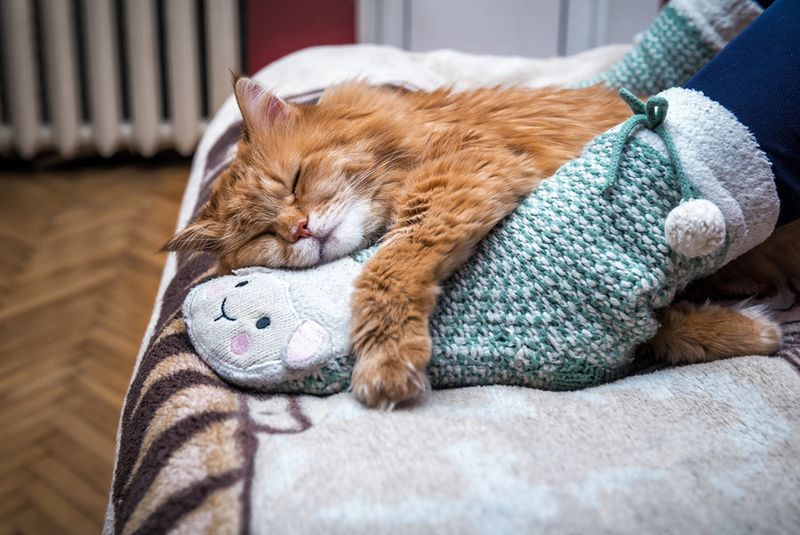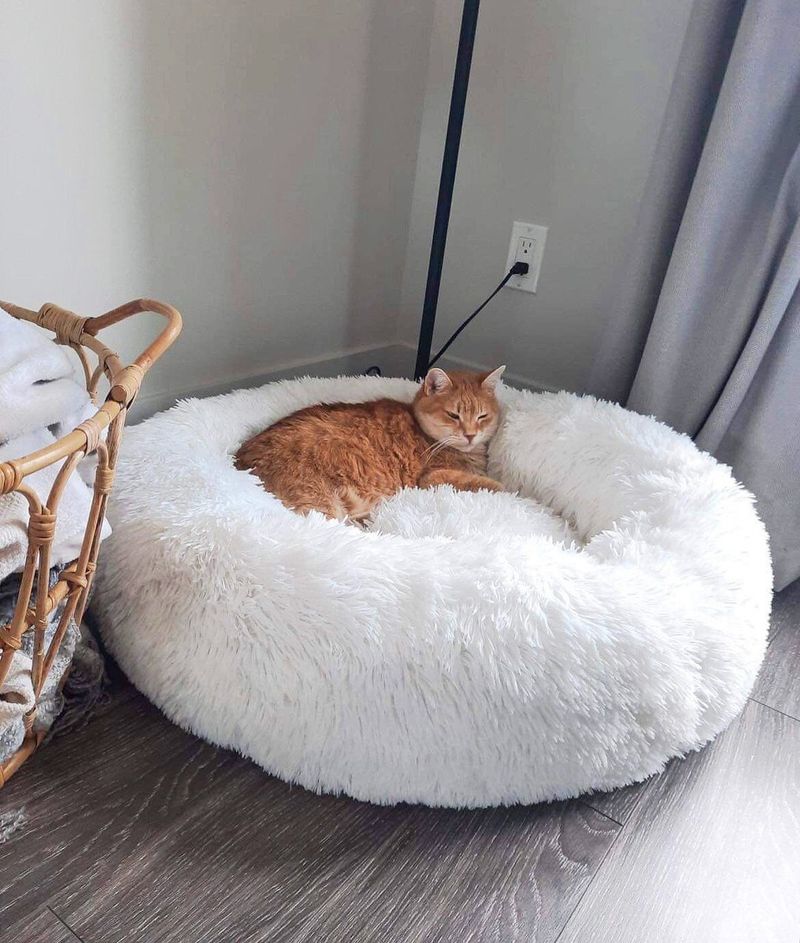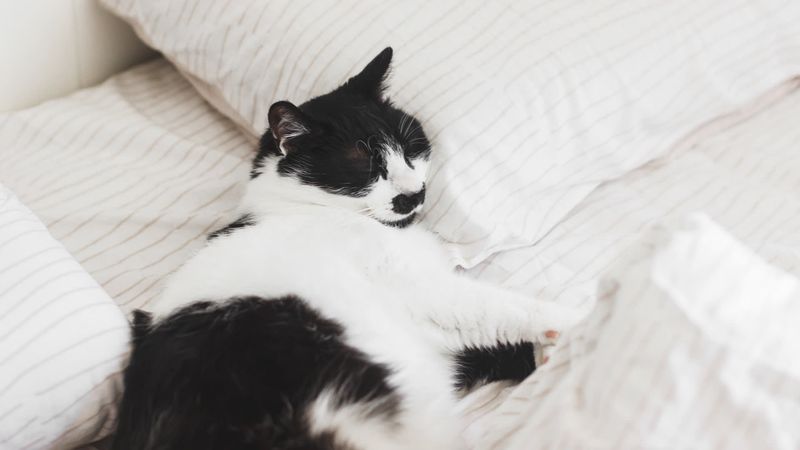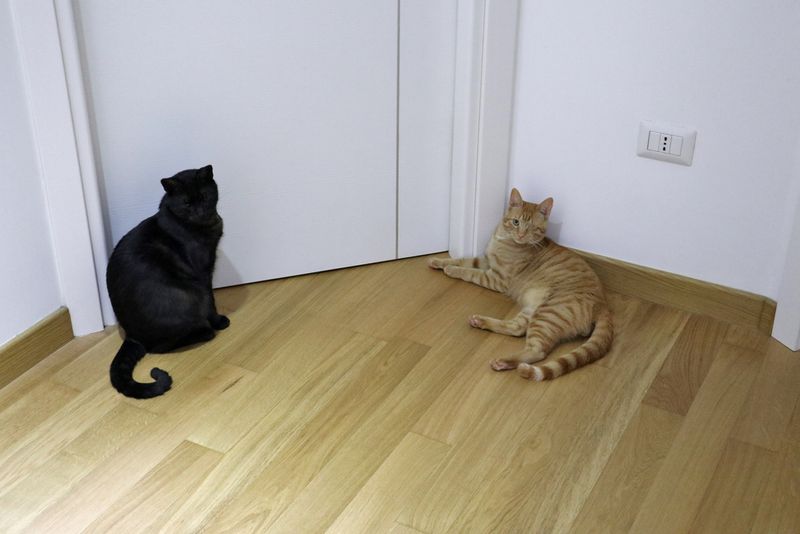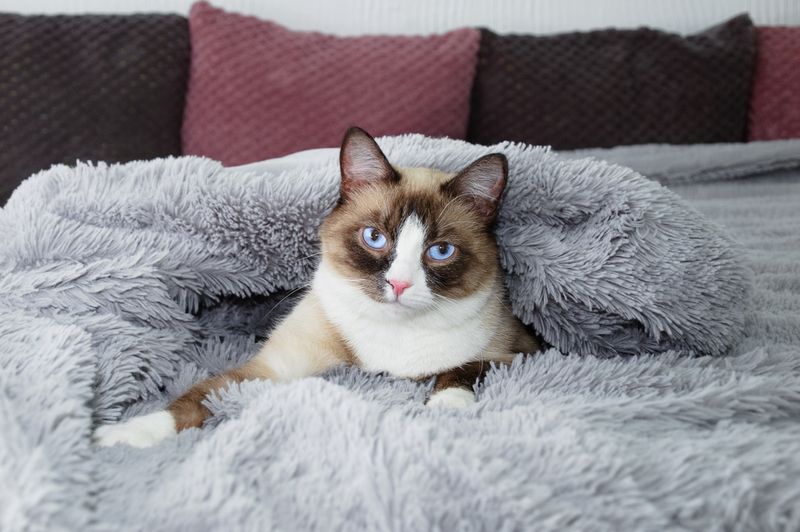📖 Table of Content:
- 1. Warmth & Body Heat
- 2. Security & Comfort
- 3. Familiar Smell
- 4. Territorial Marking
- 5. Attention-Seeking
- 6. Nighttime Routine & Habit
- 1. Gently Redirect Night After Night
- 2. Provide a Cozy Alternative Sleeping Spot
- 3. Use Heated Cat Beds or Pads
- 4. Reward Desired Behavior
- 5. Limit Bedroom Access at Night
- 6. Establish a Pre-Bedtime Routine
If you’ve ever woken up to the curious sensation of a warm, furry body nestled on your scalp, you’re not alone. Many cat owners have experienced the nightly ritual of their feline companions climbing onto their heads as they sleep. While it might seem cute at first, this behavior can quickly become a disruptive pattern—especially when you’re craving a good night’s rest.
Cats are complex, intuitive creatures with behaviors rooted in instinct, comfort, and their relationship with you. Sleeping on your head might seem random, but to your cat, it often serves a very specific purpose. Whether it’s seeking security, heat, or simply your scent, there’s usually a deeper reason behind their choice of sleeping spot.
Understanding why your cat behaves this way can help you respond with empathy—and, if needed, redirect their behavior without harming your bond. Below, we’ll explore six common reasons cats sleep on your head and provide six effective strategies to gently discourage the habit while keeping your feline friend content and close.
1. Warmth & Body Heat
Your head acts as a natural heating pad for your feline friend. While you’re snuggled under blankets, your head remains exposed, radiating consistent warmth that cats find irresistible. This attraction is especially strong during colder months when your kitty is looking for extra coziness. Cats naturally have a higher body temperature than humans, and they still seek out warm spots to conserve energy while sleeping. Your scalp, with its network of blood vessels close to the surface, provides the perfect toasty platform. This heat-seeking behavior is deeply instinctual – in the wild, staying warm means survival. Your cat isn’t being annoying on purpose; they’re simply following their biological programming to find the warmest, safest spot for quality rest.
2. Security & Comfort
Cats value stability when choosing sleep spots, and your head provides exactly that. Unlike your tossing legs or shifting arms, your head typically remains relatively still throughout the night, creating a secure platform for undisturbed cat naps. The elevated position also appeals to your cat’s natural instinct to survey their surroundings. From atop your pillow, they can monitor the room while feeling protected – the perfect combination of security and strategic advantage. Many cats also find comfort in the rhythm of your breathing and heartbeat. These steady sounds remind them of sleeping with their mother and littermates as kittens, creating a deep sense of safety and belonging that helps them relax completely.
3. Familiar Smell
Your hair carries your unique scent signature, something your cat finds deeply reassuring. Cats have an extraordinary sense of smell – about 14 times stronger than humans – and they use scent to identify safe spaces and beloved companions. When your cat nestles into your hair, they’re essentially wrapping themselves in your familiar aroma. This behavior often intensifies during times of stress or change, like moving homes or introducing new pets. Scent-bonding works both ways in this curious arrangement. While your cat enjoys your comforting smell, they’re simultaneously marking you with their own scent glands located around their face. This mutual scent exchange strengthens your bond and helps your cat feel more secure in your shared territory.
4. Territorial Marking
That cute head-sleeping habit has a possessive undertone – your cat is essentially claiming you as their property! Cats have scent glands on their cheeks, paws, and forehead that release pheromones when they rub against objects – or in this case, your head and hair. By sleeping on your head, they’re depositing their unique scent signature all over you. This territorial behavior sends clear signals to other animals that you belong to them, creating an invisible but powerful scent boundary that says “this human is mine.” The behavior might intensify if you have multiple pets competing for your attention. Your cat might be doubling down on their ownership claims, especially if they sense another pet getting too close to their favorite human.
5. Attention-Seeking
Cats quickly learn which behaviors get a reaction from their humans. If your startled jumps, gentle scolding, or amused giggles happened when your cat first climbed onto your head, you might have inadvertently reinforced this behavior, turning it into a reliable attention-getting strategy. Even negative attention counts as a win in your cat’s playbook. The midnight head-pounce that wakes you up might be your cat’s way of saying they want interaction, especially if you work long hours and they spend significant time alone. Some cats develop this habit during kittenhood if they were separated from their mothers too early. The behavior serves as a comfort mechanism and attention-seeking tactic rolled into one fuzzy, sleep-disrupting package.
6. Nighttime Routine & Habit
Habits form quickly in cats, and once a routine is established, they tend to stick with it. If your cat has received no pushback for sleeping on your head in the past, it’s likely become part of their standard nighttime behavior. Cats are creatures of repetition—they feel safe when their environment and interactions follow a predictable pattern. Even a few consecutive nights of head-sleeping can create a long-term preference. You may find that your cat heads straight to your pillow at bedtime as if it’s a designated spot. This habitual behavior can be surprisingly difficult to break without consistent redirection. What started as a comfort-seeking act can quickly hardwire itself into your cat’s sleep routine.
1. Gently Redirect Night After Night
Consistency is your greatest ally when trying to change a cat’s behavior. Each time your cat settles on your head, gently lift and relocate them to their own sleeping area—no scolding, just soft reinforcement. Cats learn through repetition, so being calm and patient will yield better results than abrupt corrections. Don’t be discouraged if it takes several nights or even weeks; habit reversal takes time. Keeping a soft blanket or bed nearby can give you an immediate redirection option. Avoid rewarding them with attention when they first climb onto your head. With repeated practice, they’ll begin to understand the new sleeping boundaries.
2. Provide a Cozy Alternative Sleeping Spot
Attracting your cat away from your head is easier if they have a tempting alternative. Invest in a cat bed with soft material, a semi-enclosed design, or a slightly elevated perch to match their preferences. Place this new bed near your sleeping area initially to create a sense of closeness. You can even include an item with your scent to make it more comforting. Once your cat starts using it, gradually move the bed to a preferred location. Introducing treats or catnip can also increase its appeal. The more inviting the new spot, the less likely your head will be the target.
3. Use Heated Cat Beds or Pads
Thermal solutions provide an irresistible alternative to your body heat. Modern heated cat beds maintain a temperature slightly warmer than ambient room temperature – perfectly mimicking the warmth your cat seeks from your head. Many options activate with your cat’s body weight and use minimal electricity. Self-warming options use special insulating materials that reflect your cat’s body heat back to them without requiring electricity. These beds are particularly useful for homes with curious cats who might chew cords or for placement in areas without convenient outlets. During winter months, consider placing the heated bed near a window where sunlight streams in during the day. This creates a warming station that becomes part of your cat’s daily routine before transitioning to the heated bed at night.
4. Reward Desired Behavior
Positive reinforcement is a powerful tool in reshaping your cat’s sleep habits. Instead of focusing only on what not to do, reward your cat when they choose to sleep in their designated spot. Treats, soothing praise, or a gentle chin scratch can reinforce their decision. Timing is crucial—give the reward immediately after they settle into the desired place. Over time, this encourages them to repeat the behavior for the reward. Avoid giving treats when they climb onto your head, even if they look extra adorable. Clear, consistent feedback helps your cat make better choices.
5. Limit Bedroom Access at Night
Sometimes a temporary separation becomes necessary when gentler approaches haven’t succeeded. Creating a comfortable sleeping station in another room with everything your cat needs – fresh water, litter box, toys, and cozy bedding – ensures they’re not neglected during this training period. The transition works best when introduced gradually. Start by keeping your cat out of the bedroom for short periods during the day before implementing full overnight separation. This helps prevent distress vocalizations that might keep you awake. Many cats adjust surprisingly quickly to this new arrangement, especially when their alternative space includes enrichment items like window perches or puzzle feeders. After establishing new sleeping habits for several weeks, you can try reintroducing bedroom privileges with clear boundaries already established.
6. Establish a Pre-Bedtime Routine
Structured evening activities help regulate your cat’s internal clock and burn excess energy before sleep. Begin with 15-20 minutes of interactive play using wand toys or laser pointers to simulate hunting, allowing your cat to experience the natural predatory sequence of stalking, chasing, and capturing. Follow playtime with a small protein-rich meal or treat. This mimics a cat’s natural rhythm of hunt-eat-groom-sleep and triggers the biological response to rest after eating. The timing creates a predictable pattern that signals bedtime is approaching. Complete the routine with a quiet cool-down period in their designated sleeping area. Gentle petting or brushing during this time helps your cat associate their bed with relaxation and comfort. Consistency is crucial – perform these activities in the same order at approximately the same time each night.
